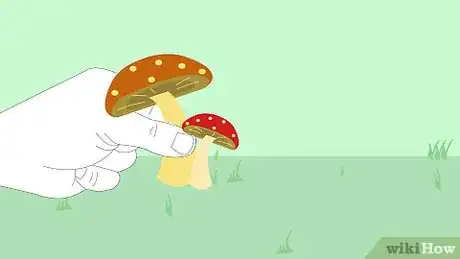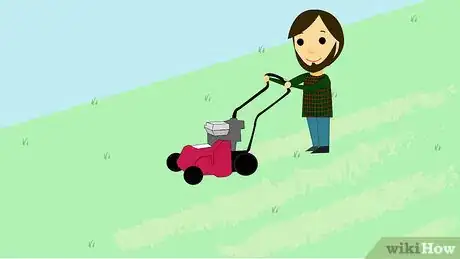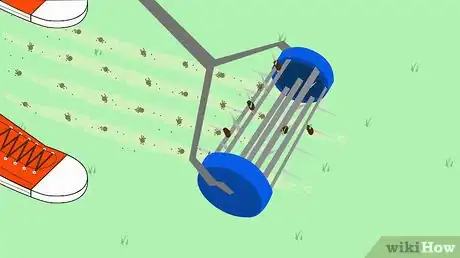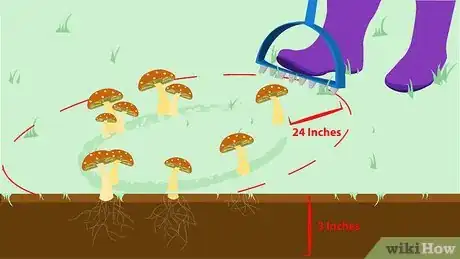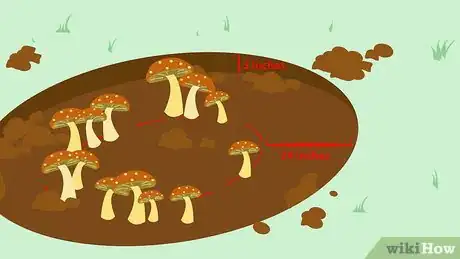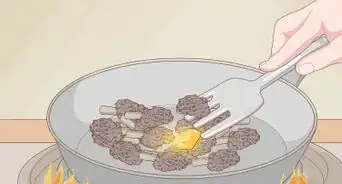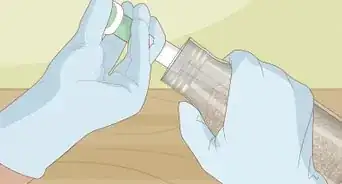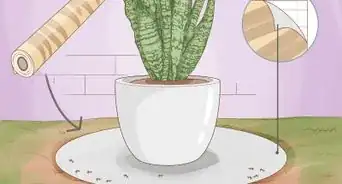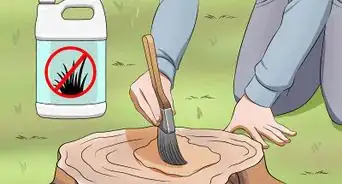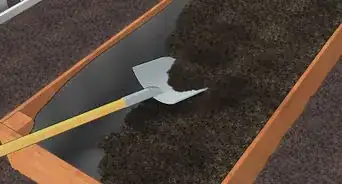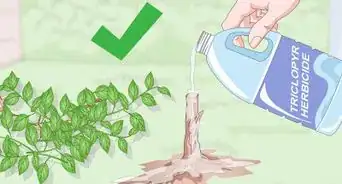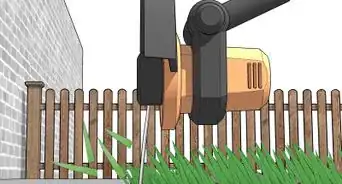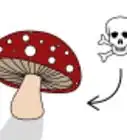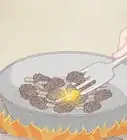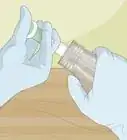This article was co-authored by Andrew Carberry, MPH. Andrew Carberry is a Food Systems Expert and the Senior Program Associate at the Wallace Centere at Winrock International in Little Rock, Arkansas. He has worked in food systems since 2008 and has experience working on farm-to-school projects, food safety programs, and working with local and state coalitions in Arkansas. He is a graduate of the College of William and Mary and holds a Masters degree in public health and nutrition from the University of Tennessee.
There are 11 references cited in this article, which can be found at the bottom of the page.
wikiHow marks an article as reader-approved once it receives enough positive feedback. This article received 16 testimonials and 86% of readers who voted found it helpful, earning it our reader-approved status.
This article has been viewed 1,010,277 times.
Most mushrooms are beneficial to lawns, because they help break down dead material and return nutrients to the soil. They do not always look nice, however, and can be a source of concern if you have children or pets. Simply plucking mushrooms does not kill them, however; like an iceberg, the mushroom is often much larger beneath the surface of the soil. You must attack the entire mushroom like a hydra if you want to kill it. This article will show you how.
Steps
Removing Mushrooms
-
1Remove the mushrooms from the ground as soon as you see the caps appear. If you leave them for too long, they will release spores, which will lead to more mushrooms. When you see mushrooms appear, simply pull them out of the ground.
- You can also try mowing or raking over the mushrooms, but this will heighten the chances of them spreading spores across your lawn.
-
2Dispose of the mushrooms properly. Do not toss them into your compost pile. Instead, keep a plastic bag with you, and put them into the bag as soon as you pull them out of the ground. Once the bag is full, tie the bag up tightly, and toss it into a trashcan or incinerator. This will help prevent the mushrooms from spreading spores across your lawn.[1]Advertisement
-
3Apply a nitrogen fertilizer to deter mushrooms from growing in organic matter. The fertilizer will quicken the decomposition of the matter, which will leave the mushrooms nothing to feed off of. Plan on using 1 pound (453.59 grams) of nitrogen for every 1,000 square feet of lawn.
- Do not use slow release or water-soluble nitrogen fertilizer.
- You will need to do this annually.
- Consider adding some phosphorous and potassium as well. You will need 3 parts nitrogen, 1 part phosphorous, and 2 parts potassium.[2]
-
4Use soap and water to kill off the mushrooms. Mix 2 to 3 tablespoons (29.6 to 44.4 ml) of dish soap with 2 gallons (7.57 liters) of water. Poke holes into the soil around the mushrooms using a shovel, trowel, or screwdriver. Fill the holes with the soapy water.
-
5Take care with potted plants. Potted plants are often subject to mushrooms and other types of fungi. They are often subject to over-watering, and stay indoors, where the air is warm and still. This is a perfect environment for mushrooms. Here are some simple ways to keep your potted plants mushroom-free:[3]
- Pluck mushrooms as soon as you see them appear, and toss them in the trash immediately.
- Provide ample air circulation by keeping the plant near a window or fan.
- Avoid over-watering. Let the soil become dry at the top before watering.
- Use a watering bulb to keep the soil deep inside the pot moist, and the upper layer dry.
Altering the Environment
-
1Make sure that your lawn has proper drainage. Mushrooms love damp and humid places. If your lawn holds too much water, you will need to make sure that it drains properly. Here are some ideas on how you can introduce proper drainage to your lawn:[4]
- If water is flowing down a slope, build up soil to redirect excess water to a more desirable location.
- Add a pond or water garden to catch excess water. They are easy to maintain and can act as a decorative feature to your garden.
- Place rain barrels beneath waterspouts to collect excess water during storms. This will prevent the water from soaking into your lawn.
- Consider adding an underground drain, such as a French drain (an underground ditch filled with gravel) to help disperse water and prevent it from becoming stagnant.
-
2Make sure that your lawn has well-drained soil. If your garden has a clay base, the water will have nowhere to go once it soaks through your lawn. It will sit and become stagnant. If you can, try mixing some sand or other well-draining material into your lawn to help disperse the water better.
- When watering your lawn, try to water it in the morning instead of at night. The sun will help the excess water evaporate instead of sit and become a breeding ground for mushrooms.
-
3
-
4De-thatch the lawn to minimize shade and create more air circulation.[7]
- Manually go over the lawn with a convex rake.
- Use a power rake. You can rent it from some hardware or home improvement stores. Once you are done power raking your lawn, you will need to use a regular rake to sweep up the debris.
- If you have cool-season grasses, de-thatch the lawn between late summer and early fall.
- If you have warm-season grasses, de-thatch in late spring.
-
5Make sure that there is enough air circulation by aerating your lawn. Not enough air circulation will lead to moisture being trapped—and where there is excess moisture, there will be mushrooms. Get an aerator from a home improvement or hardware store, and go over your lawn with it. The aerator will pull out plugs of earth out of your lawn. This will help loosen the soil and let more air in.[8]
- Consider aerating the ground with an aerator to prevent the mushrooms from sitting in a stale, moist environment.
-
6Eliminate decaying elements that enhance the growth of mushrooms. Remove decomposing wood chips and small branches, a favorite of many mushrooms. Also keep your lawn clear of pet waste and any other decomposing matter the mushrooms could feed off. Keep grass clippings off your lawn by raking them up after mowing, or by attaching a grass catcher to your mower. Clean up pet waste. Have tree stumps ground and removed.
Managing Fairy Rings
-
1Locate the fairy ring. A fairy ring is a ring of mushrooms growing in grass. They're usually easy to spot, but sometimes the mushroom caps are not visible. In these cases, the fairy ring will appear as a ring of dark green grass. In some cases, the ring will appear as a circle of dead grass.[9]
-
2Determine how deep the fairy ring goes. Get a trowel, shovel, or screwdriver, and prove the soil around the mushrooms. You may notice some white, fibrous stuff in the soil. This is known as the fungal mat. Depending on how thick it is, you will need to employ different methods of eradicating the ring.
-
3Use a lawn aerator on fairy rings if the fungal mat is fewer than 3 inches (7.62 centimeters) thick. Start aerating 24 inches (60.96 centimeters) outside the outer rim of the ring, and work your way inward towards the center.[10]
-
4Dig out fairy rings if the fungus mat is deeper than 3 inches (7.62 centimeters). Get a shovel, and dig out the soil containing the mushrooms. Go about 12 inches (30.48 centimeters) deep. Once you have dug out the mushrooms, you will need to expand the ring you just dug by 12 to 18 inches (30.48 to 45.72 centimeters) to either side. 24 inches (60.96 centimeters) would be better. Some experts advise digging all the way to the center of the ring.
- As you dig, try to determine the cause of the fairy ring. Look for rotting wood, construction debris, or anything that could keep water from draining. Remove any of these causes as you go.
-
5Discard the mushrooms and contaminated soil. To avoid spreading the mushroom spores all over your garden, toss everything into a large garbage bag. Tie the bag up tightly, and toss it into the bin. Do not throw the mushrooms or the soil into your compost pile.
-
6Fill the plugs in with fresh soil. Avoid using immature compost, which could contain mushroom spores. (Mature compost is great for soil drainage and sterilized by the composting process.)
- If you have heavy clay soil, add sand to the mix to help with drainage.
-
7Consider patching up the soil with a quick-growing grass. The grass will cover the soil on its own, but it can take a while. If you are in a hurry to get your lawn looking green again, you can cover the bare soil with some fresh sod (turf). You can also sprinkle some grass seeds over the soil instead.
Expert Q&A
-
QuestionHow can I kill slimy mold that is growing on my plants?
 Andrew Carberry, MPHAndrew Carberry is a Food Systems Expert and the Senior Program Associate at the Wallace Centere at Winrock International in Little Rock, Arkansas. He has worked in food systems since 2008 and has experience working on farm-to-school projects, food safety programs, and working with local and state coalitions in Arkansas. He is a graduate of the College of William and Mary and holds a Masters degree in public health and nutrition from the University of Tennessee.
Andrew Carberry, MPHAndrew Carberry is a Food Systems Expert and the Senior Program Associate at the Wallace Centere at Winrock International in Little Rock, Arkansas. He has worked in food systems since 2008 and has experience working on farm-to-school projects, food safety programs, and working with local and state coalitions in Arkansas. He is a graduate of the College of William and Mary and holds a Masters degree in public health and nutrition from the University of Tennessee.
Food Systems Expert Give your plants more sunlight and airflow, and cut back on watering the plants. Wipe the leaves with a mild soap mixture to remove the mold.
Give your plants more sunlight and airflow, and cut back on watering the plants. Wipe the leaves with a mild soap mixture to remove the mold. -
QuestionHow do I remove fungus from soil?
 Andrew Carberry, MPHAndrew Carberry is a Food Systems Expert and the Senior Program Associate at the Wallace Centere at Winrock International in Little Rock, Arkansas. He has worked in food systems since 2008 and has experience working on farm-to-school projects, food safety programs, and working with local and state coalitions in Arkansas. He is a graduate of the College of William and Mary and holds a Masters degree in public health and nutrition from the University of Tennessee.
Andrew Carberry, MPHAndrew Carberry is a Food Systems Expert and the Senior Program Associate at the Wallace Centere at Winrock International in Little Rock, Arkansas. He has worked in food systems since 2008 and has experience working on farm-to-school projects, food safety programs, and working with local and state coalitions in Arkansas. He is a graduate of the College of William and Mary and holds a Masters degree in public health and nutrition from the University of Tennessee.
Food Systems Expert You can aerate the soil, add fertilizer, or dig the soil out and remove it from the area.
You can aerate the soil, add fertilizer, or dig the soil out and remove it from the area. -
QuestionWill vinegar kill mushrooms in my yard like it does weeds?
 Community AnswerMushrooms can be killed by something having a pH level of 1 or 1.2. Vinegar is weaker than that, so it wont kill the mushrooms. However, I can recommend raw acetic acid.
Community AnswerMushrooms can be killed by something having a pH level of 1 or 1.2. Vinegar is weaker than that, so it wont kill the mushrooms. However, I can recommend raw acetic acid.
Warnings
- Mushroom spores can be blown by the wind from other areas and a reinfestation will occur if you do allow the location to become fungus friendly with moisture, darkness and decay. Do not stop your practices once the mushrooms are gone unless you want them to return.⧼thumbs_response⧽
- Some mushrooms are poisonous. Do not eat any mushrooms that you find. Only experts can distinguish some of the poisonous varieties from edible varieties. Be cautious if children or pets are around wild growing mushrooms.⧼thumbs_response⧽
- Always wash your hands after handling mushrooms.⧼thumbs_response⧽
- Because mushrooms feed off of dead or decomposing material, sometimes it is impossible to completely get rid of them without cutting out the infected area (such as a tree branch or a fence picket).⧼thumbs_response⧽
Things You'll Need
- Rake
- Mower with grass bag catcher
- Aerator
- Hoe
- Nitrogen fertilizer
- Fungicide
- Fireplace or incinerator (optional)
References
- ↑ http://www.garden.org/searchqa/index.php?q=show&id=102868&ps=76&keyword=lawn&adv=0
- ↑ http://www.garden.org/searchqa/index.php?q=show&id=102868&ps=76&keyword=lawn&adv=0
- ↑ http://www.balconycontainergardening.com/gardening/226-get-rid-of-mushrooms
- ↑ http://www.gardeningknowhow.com/garden-how-to/soil-fertilizers/yard-drainage-problems.htm
- ↑ http://www.bayeradvanced.com/articles/get-rid-of-mushrooms-in-your-lawn
- ↑ http://www.ipm.ucdavis.edu/PMG/PESTNOTES/pn74109.html
- ↑ http://www.scotts.com/smg/goART2/contentArticle/best-ways-to-dethatch-aerate-lawn/34000007/12400011/32000007/18800019
- ↑ http://www.scotts.com/smg/goART2/contentArticle/best-ways-to-dethatch-aerate-lawn/34000007/12400011/32000007/18800019
- ↑ http://www.missouribotanicalgarden.org/gardens-gardening/your-garden/help-for-the-home-gardener/advice-tips-resources/pests-and-problems/diseases/fairy-rings/lawn-mushrooms.aspx
About This Article
To kill mushrooms, first put latex gloves on to keep potentially poisonous spores off of your hands while you work. Then, pull each cap out of the ground by hand. Put the mushroom caps in a plastic bag and discard it to keep the mushroom spores from spreading. Mix 4 parts water with 1 part horticultural vinegar in a spray bottle. Mist the soil where the base of each mushroom was sticking out of the ground. Continue doing this for 5 days to ensure that the mushrooms don’t grow back. Alternatively, you can work a fertilizer high in nitrogen into the soil where the mushroom caps were growing to kill the roots. You can also mix 3 tablespoons (45 mL) of dish soap with 2 gallons (7.5 L) of water and pour this mixture into the soil to keep the mushrooms away. Keep in mind that a small patch of mushrooms is actually good for your lawn and is a sign of healthy soil. For tips from our gardening reviewer on preventing future mushroom growth, read on!
